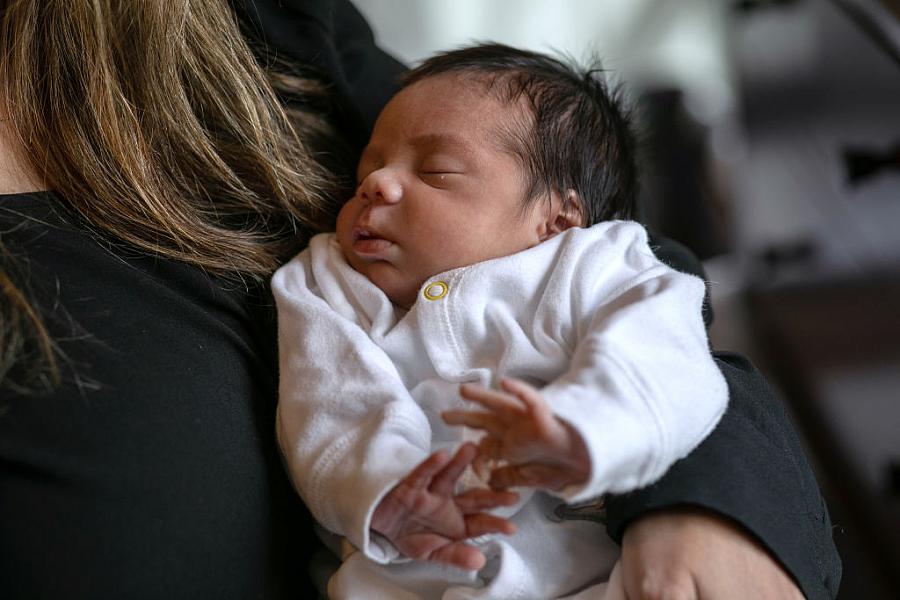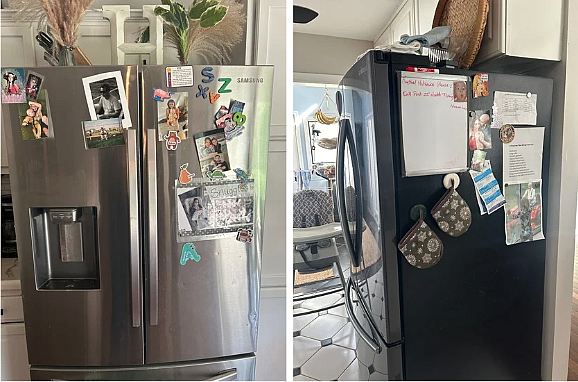A reporter’s exploration of medical debt from childbirth leads to three stories — and three key takeaways

(Photo by John Moore/Getty Images)
At the start of last year, I was hearing stories all around me about new mothers receiving sky-high delivery bills. Large medical bills are an unfortunate byproduct of our unequal health care system, but these stories struck me as particularly egregious. Pregnancy is a covered condition under Medicaid and the Affordable Care Act, so in theory no one should be paying tens of thousands of dollars to have a baby.
I set out to pursue two questions: Who were the people incurring medical debt from their deliveries, and what failures in the system were allowing this to happen?
My investigation led me to three stories.
First, it quickly became clear that having a child was expensive for middle-class couples with restrictive private insurance plans — those with high deductibles or out-of-pocket maximums, for instance — and who earned too much to qualify for Medicaid. That group had been largely overlooked in conversations about the increasing costs of medical care, since people commonly assumed they were protected by the ACA.
My reporting found something different: Loopholes in the ACA can lead to acute debt during maternity, partly because of how expensive that particular type of care is. People see multiple doctors, have at least nine months’ worth of appointments, and ultimately get billed twice for their deliveries — once for themselves, and once for their baby.
The conclusion, once I arrived at it, seemed obvious. But I realized it hadn’t been clearly or cohesively articulated to the public.
Therein was my first reporting lesson: There’s value in illustrating the full picture to readers, even if they’ve seen or heard snippets of a story before.
As I searched for families with childbirth-related medical debt, I also came across a couple who had joined a health care sharing ministry — a nonprofit organization that uses membership fees to reimburse people for medical bills. The couple had signed up in hopes of getting reimbursed for their maternity expenses, but they discovered less than a year into their membership that their bills weren’t “shareable.”

From left, the refrigerator at the Hurley home in Springfield, Illinois, the main characters in the author’s first story, and the refrigerator at the Sheffield/Kaplan home in Arden, North Carolina, the main characters in her last story.
I initially dismissed the story, thinking it didn’t fit my framework. But the more I spoke with members of these groups, the more I came to understand that this couple represented a widespread problem. Most health care sharing ministries restrict maternity care, often by requiring several months to a year of membership before someone is eligible to be reimbursed. The groups also have no legal responsibility to cover people’s medical bills — yet they’ve become increasingly popular as people have become more frustrated with the health insurance system.
My second story featured four families who said they had been deceived by health care sharing ministries during pregnancy or childbirth, claiming the model could be just as bad — if not worse — than the insurance system they opted out of.
My second lesson: Don’t be afraid to veer in new directions, even if it doesn’t fit your original mold.
For my last story, I surmised that abortion bans could be having an indirect effect on childbirth costs, if people were forced to have babies they couldn’t afford. In speaking with abortion providers and activists, they all agreed that abortions were harder to obtain after Roe v. Wade was overturned in 2022. But then I came across data showing that abortions had actually gone up since the Supreme Court’s Dobbs decision. I wondered: Why wouldn’t my sources have mentioned that?
As it turned out, a lot of people were afraid of media outlets misinterpreting the stat, or suggesting that Dobbs didn’t have a major effect on the abortion landscape in the U.S. I realized that I had to earn their trust to figure out what was going on. I wanted to understand the truth, I told them — even if it was complicated, I planned to convey that nuance.
My final story illustrated how a small network of providers managed to prescribe and ship abortion pills nationwide, in spite of state bans. But it also noted that some people who wanted abortions still couldn’t get them — particularly low-income women of color.
My third lesson: Don’t depend on your sources’ accounts. Look for the data to support them.
By the end of the year, my original project had taken several twists and turns. But the connective tissue was still there. Each of my stories reflected a different challenge associated with pregnancy or childbirth in the U.S. And all three stories spoke to a highly pertinent theme: Across the country, people are fighting for control over their reproductive journeys. Over and over, I heard from women that their choices — whether it was seeking an abortion or having a child — didn’t feel like their own.
For Nekia, a 25-year-old Indiana resident, the difficulty of traveling out-of-state for an abortion almost prevented her from getting one. “It was a lot of thinking, a lot of anxiety,” she told me. “Maybe I shouldn’t do this. Maybe I should just carry to term, because it just feels like there’s so many obstacles.”
For Ashley, a Ph.D. student in North Dakota, the more than $10,000 in costs associated with her pregnancy and birth of her twins made her feel powerless: “I just kind of said, ‘What can we do? We don’t have a choice. We have to do all this medical care.”
And for Rachel, a first-time mom in North Carolina, negotiations over medical bills made her reconsider expanding her family. “The system decides whether or not we want to have a kid,” she said. “That’s ridiculous, but that’s kind of the world we live in.”

